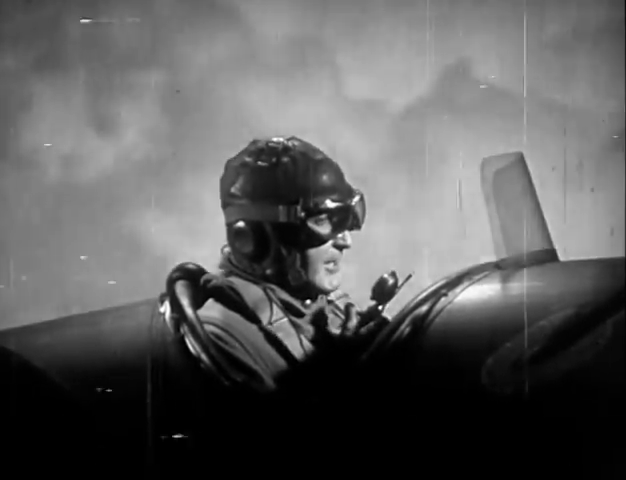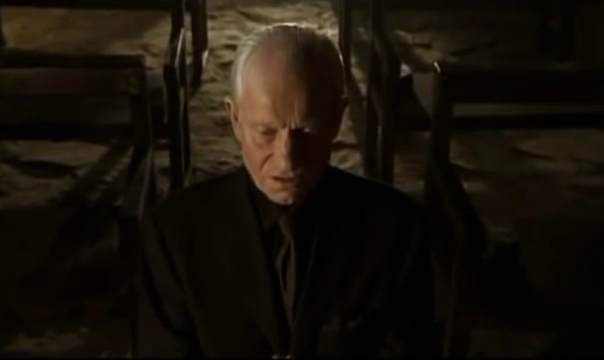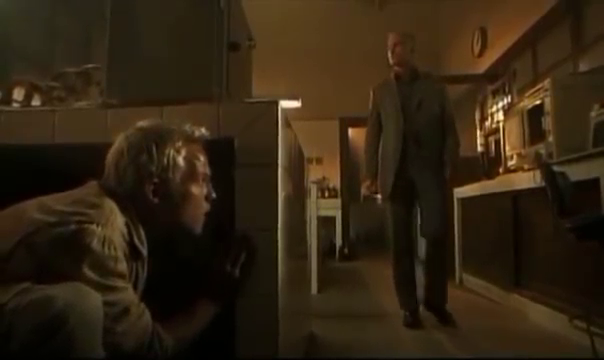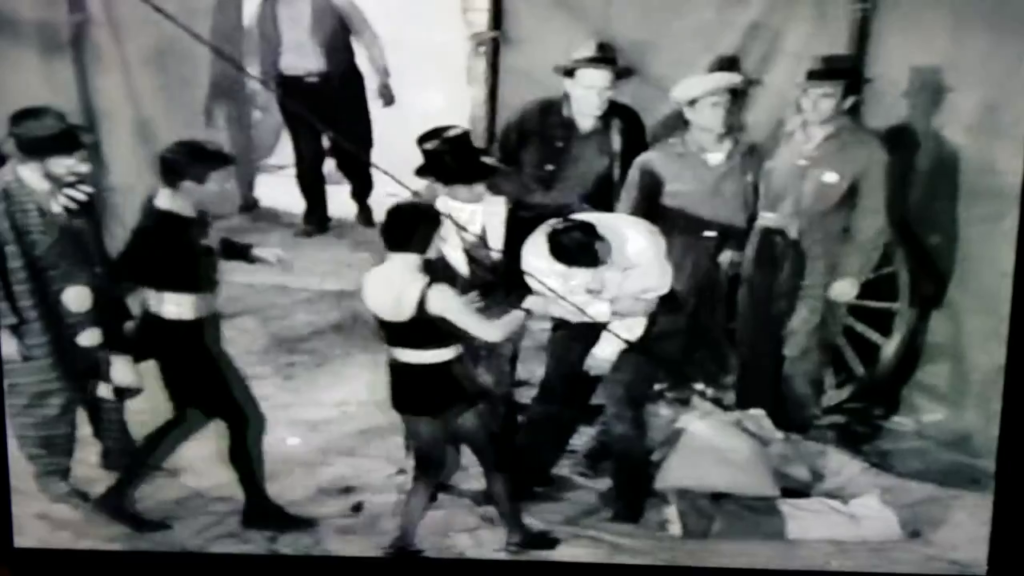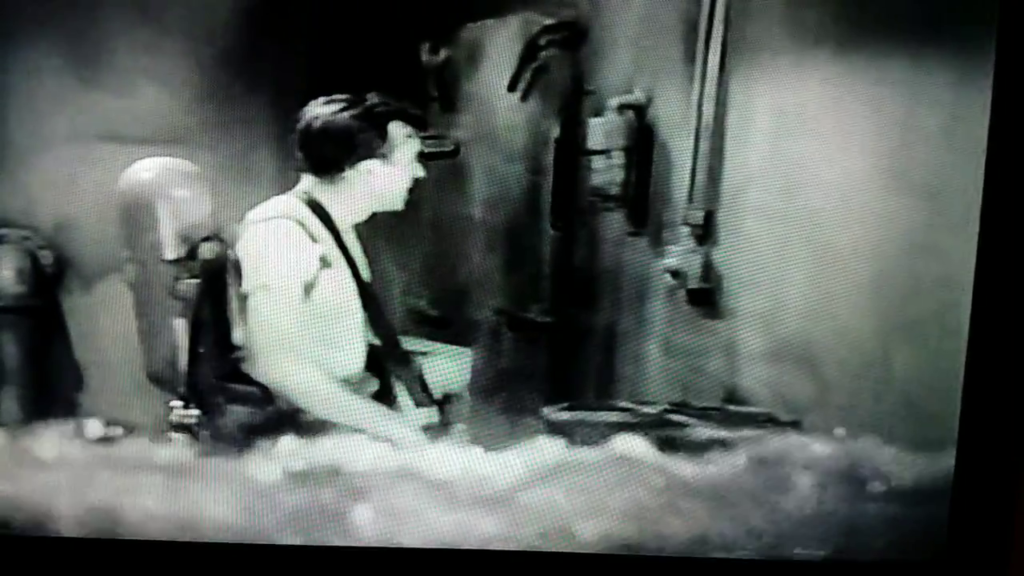-
#473 – Ghost Patrol (1936)
Ghost Patrol (1936)
Director: Sam Newfield
Film review #473
SYNOPSIS: Professor Brent has invented a machine that can stop internal combustion engines from a distance. The leader of a group of bandits kidnaps him and forces him to use his invention to bring down aircraft so they can rob them. Federal agent Tim Caverly is sent in to investigate and rescue the professor, and when the local bandits mistake him for outlaw Tim Toomley, he assumes his identity in order to get closer to the bandits and uncover their plan before they bring down the next plane…
THOUGHTS/ANALYSIS: Ghost Patrol is a 1936 film. The story centres around a device that is able to bring down planes from a distance by stalling their engines, and a gang of bandits that has kidnapped the inventor and forcing him to use the machine to bring planes down, so that they can loot the wreckage. Government agent Tim Caverly is sent in to investigate and rescue professor Brent, who invented the device. Encountering the bandits who are responsible, they mistake him for Tim Toomley; a noted outlaw, and Tim plays along in order to get closer to the bandits and find out where the professor is. The film is basically a western with the added sci-fi element of this machine that can stop internal combustion engines. It’s called a “radium tube,” and a lot of the inventions in these films are named after radium, or fuelled by it for some reason. Anyway, at just under an hour long, there’s not too much in the way of content to talk about: the pacing is slow, and there’s just a lot of horseriding and dialogue that moves along the story at a slow pace. Everything is quite predictable and unsurprising, and a swift resolution at the end doesn’t provide much of an exciting climax. The plot reminds me very much of a film serial, which would probably have found a way to stretch the story into three years of a back-and-forth between the characters, while adding nothing of value otherwise.
The characters themselves are pretty forgettable and bland too. Tim Caverly/Toomley is a standard gun-slinging cowboy with no real personality. His sidekick serves as a bit of comic relief, and the sole female character delivers a good performance, but ultimately serves very little purpose other than being the daughter of the professor (the only purpose a vast majority of female characters have in films at this time). The villains are, as well, a rather forgettable bunch.
There’s not much that is remarkable in terms of the film’s production: most of it looks like repurposed sets and props from any western from the era. The machine looks quite cool and complex, but we don’t really see much of it: in fact, the professor and the machine don’t show up until after halfway through the film. The lack of any accompanying music also makes the film feel empty, and there’s a mismatch in the audio, which means you can hear when the film is on a set from the echo in the audio to when it is outside on location. Also, I’m not sure what the title “Ghost patrol” is referring to, as there’s nothing remotely ghost-like or much patrolling done at all. Overall, Ghost Patrol is a fairly forgettable film with unremarkable characters, a story you’ve seen before, and a setting in an oversaturated western genre that even with a sci-fi twist fails to stand out.
-
#472 – Ancient Relic (2002)
Ancient Relic (2002)
Film review #472
Director: Sebastian Niemann
SYNOPSIS: At an archaeological dig site in Israel, archaeology student Steffan Vogt stumbles upon an unbelievable discovery: a 2000 year old skeleton that has a metal implant, and the instruction manual for a video camera that has not been commercially released yet. Alongside it, a note detailing the existence of a video recording made of Jesus Christ when he was crucified. While most of the crew believe it to be some form of hoax, Steffan believes that the only possible explanation is a time traveller that went back into the past to film the momentous occasion. When a secret order starts to take control of the dig and silence anyone that knows about this discovery, Steffan teams up with Sharon and Joshua, who were also at the dig site, to uncover the truth about what is happening, before they too are silenced…
THOUGHTS/ANALYSIS: Ancient Relic (Also known as The Hunt for the Hidden Relic, or The Jesus Video) is a German 2002 TV movie based on the novel by Andreas Eschbach. The opening of the film shows an archaeological dig site in Israel, where one of the students at the site, Sebastian Vogt, accidentally stumbles upon a burial site that’s full of mystery: a 200-year old skeleton that has signs of being form the present, such as a metal splint on his legbone, and the instruction manual for a video camera. Most of the archaeologists believe it is some form of hoax, but Steffan believes that the only possible explanation is that it is the work of some time traveller. A handwritten note accompanying the skeleton suggests that they actually videotaped the crucifixion of Jesus, which would be irrefutable proof of his existence. When Steffan tries to investigate further, he is shut out by a mysterious group who arrive and take control of the discovery. Steffan tries to sneak in and get more information, but starts to be hunted by this group as apparently he now knows too much. Steffan goes to fellow archaeologists Sharon and her fiancée Joshua, and the three attempt to unravel the mystery and find the video camera before they are killed. The plot is pretty typical conspiracy, ancient order, religious stuff; with secret groups trying to get a hold of the supposed video recording of Jesus as it would apparently be a weapon of such power, that if it disproved the existence of Jesus, western civilisation would simply collapse. I think that’s a bit of an overstatement, as I’m sure people that didn’t want to believe evidence that doesn’t fit their worldview can just call it a hoax and move on. Most of the elements of the story are left pretty vague, including these ancient orders and what they actually do. It’s probably something that’s more fleshed out in the book, but instead this film just opts for constant chase scenes and stalking that never really goes anywhere, and never arrives at the interesting bits, such as actually seeing the content of this recording, which is saved until the very end, and reveals a “surprise” twist that is entirely predictable, and just leaves open more questions that it answers.
The characters are all pretty uninteresting. Steffan just a young, well-built lead that can do all the action sequences and take a lot of cuts and bruises. His opening trait that he is an atheist doesn’t really play much of a part in the story, although obviously as the whole “Jesus video” thing starts emerging, he starts to question his atheism in a very predictable fashion. The love triangle between Sharon (the only female character), her fiancée Joshua, and Steffan is entirely without note, and again very predictable. The villains are basically henchmen of this secret organisation, and are never given any character development, or motivation, because we never get a clear sense about the purpose of this organisation.
As mentioned, we don’t see the contents of the video recording until the very end, and as a pay-off it doesn’t really deliver something satisfying that required nearly three hours of build up. The aspect of time travel is barely explored, and only explained through exposition and recordings that have no direct effect on what’s happening on-screen. The whole idea of a camcorder recording Jesus also seems a bit unbelievable, particularly it’s being able to work two thousand years later. The most notable aspect of the production is the English dubbing, given that this was originally a German production: The dubbing is terrible, and none of the voices have any real emotion or direction, which is constantly distracting from any drama on screen. Overall, Ancient Relic has an interesting story and fits into that genre that the Da Vinci Code really popularised. It is however, not a great example of the genre: the organisations and conspiracies are intangible and don’t really connect to anything specific, the mystery is very generic, and the pay-off isn’t worth it. I’m sure the novel is a lot more interesting than this poor adaptation, and I would suggest checking it out if you like these sorts of stories, because this film adaptation won’t satisfy.
-
#471 – King of the Carnival (1955)
King of the Carnival (1955)
Film review #471
Director: Franklin Adreon
SYNOPSIS: A counterfeiting operation to flood the United States with fake money leads to treasury agents Art Kerr and Jim Haynes to investigate a circus in connection with the operation. Art asks acrobat Bert King to aid them in putting a stop to the counterfeiting, and to unmask the villain responsible…
THOUGHTS/ANALYSIS: King of the Carnival is a 1955 film serial and the last serial made by Republic Pictures. As the other two serial producing companies (Universal and Columbia) has already stopped producing them, King of the Carnival stands as the final serial, and the end of the format as a whole. The serial is set in a circus, where Bert King performs as an acrobat (The title “King” of the carnival refers to Bert, and is something that Republic Pictures also did with the lead character in King of the Royal Mounted). When agents of the U.S. treasury Art Kerr and Jim Haynes arrive on the scene investigating a counterfeit operation they believe is connected to the circus, Art asks his old friend Bert to aid them in unravelling the sinister plot. The villain’s plot centres around the production of counterfeit money and flooding the U.S. with it, so that the currency is devalued and other countries lose confidence in it. If that sounds like a dull and boring set-up, that’s because it is. There’s nothing else to this story other than this bizarre plot that doesn’t really make sense: surely it would take a huge operation to destroy a currency like the U.S. dollar, and the serial just has one guy working in a sunken boat. Such an intangible plot never connects with the viewers, and will be sure to bore. The plot does have this similar theme of many post-war serials, in that foreign powers attempt to sabotage the U.S. in some way, marking the onset of the cold war. However, the serial format never returned to it’s peak popularity like it had during the war. The circus element of the story is a bit more unique, but a lot of the action scenes are footage taken from the earlier serial Daredevils of the Red Circle, which wasn’t too great itself.
The characters are a typical and uninteresting bunch. You have the male leads, a single female character who is also an acrobat at the circle (although you never see her doing any of the stunts because the footage taken from Daredevils of the Red Circle had no female performers). The villain “Zorn” has no real presence and just gives orders to his henchmen to do the dirty work. It is revealed that someone at the circus is actually the leader of the counterfeiting operation, setting up a mystery villain reveal at the end, but you probably won’t care as it makes no real difference to the plot.
When this serial was released in 1955, the world of cinema and media in general had moved on from the fifteen or twenty years before when the serial was so popular. However, King of the Carnival could easily have been made at the height of the format’s popularity, and still be pretty poor. It takes no advantages of any advances in technology and the evolution of cinema, and just ends up being another cut-and-paste job that many of the serials are. At this time too, obviously televisions were appearing in people’s homes, and the idea of going to the theatre every week to watch a new instalment was fast becoming outdated when you could just tune in to an ongoing series from your television at home. The serial format never really tried to change or adapt to the times; the companies that made them clearly just saw that their time was up, and focused on feature films. Not that I can really blame them, as the introduction of TV made the format redundant. Going back to King of the Carnival, it feels very much like a poor production that is well aware of it’s fate. The ‘circus’ is clearly just a set with cloths draped all over them to give the illusion if it being a big tent, and the cliffhangers lack any form of imagination or suspense, especially when viewers had been seeing these same ones for over twenty years. Overall, King of the Carnival is a poor swansong for the serial format, accentuating their worst elements such as low budget, repetition, and one-dimensional characters, while not providing any imaginative settings, devices etc. that some of the more popular serials did. The serial format had very much run its course, perhaps many years before King of the Carnival was released, and it is a stark reminder of all of it’s worst elements.
-
#470 – Evangelion 3.0 + 1.0 Thrice Upon a Time
Evangelion: 3.0 + 1.0 Thrice Upon a Time (2021)
Film review #470
Directors: Hideaki Anno, Kazuya Tsurumaki, Katsuichi Nakayama, Mahiro Maeda
SYNOPSIS: Following the aversion of the fourth impact, the Eva pilots are left wandering the ruins of Tokyo-3 defeated and deflated, until they are picked up by familiar faces that take them to a settlement where people are surviving in the world that has been left behind by the pilots actions. They do their best to fit into this new world, but they know that their fight is not over, and the final battle to save humanity is edging closer…
THOUGHTS/ANALYSIS: Evangelion 3.0 + 1.0 Thrice Upon a Time is a 2021 Japanese animated film, and the fourth and final film in the Rebuild of Evangelion film series. The film starts out with a battle in Paris, where WILLE are attempting to restore the city to a habitable condition. They succeed, and the focus switches to the three protagonists who we saw at the end of the previous film, wandering the ruins of Tokyo-3 without purpose as their EVAs have been destroyed. They are rescued and taken to a small settlement where they meet some of their old school friends, who have now grown up, while they remain the same age due to a side effect of being EVA pilots. The first part of the film is set in this settlement as the three try to come to terms with what has happened and being around other people. It’s slow paced, but gives ample time to focus on each of the characters individually and their own personal journeys. Although the characters have been psychologically explored in the previous films, it still feels rewarding to do it again, and as this is the final film, provide some closure for their own individual journeys. The themes of finding your place in the world amongst others, and taking responsibility for your actions are fairly clear, and drive the character’s journeys and their individual responses. The plot structure of dedicating the first half of the film to this more slow-paced exploration and the latter half focusing on the action and lore is a good balance, and stops one interrupting the flow of the other. If you’re watching this film, it is probably not your first experience with the franchise, but if it is, you’re definitely not going to be able to keep track of everything that’s happening (this is also true if you’re a die hard fan, but in that case, you’re somewhat expecting not to get everything right away and that some things are open to interpretation).
The latter half of the film is when the action kicks in and the stakes get raised to infinity. The film manages to push itself even further than the TV series and End of Evangelion (The alternate telling of the TV version ending). All of the new elements that were added over the film series are addressed and resolved (apart from those which are intentionally left ambiguous). It even manages to incorporate the events of the TV series as somewhat canon. As such, it is a satisfying conclusion to the series that gives the characters the ability to look forward to the future. The action scenes constantly pile more and more things into them as it gets quite over-the-top, but again, it’s what you come to expect from the series. The characters don’t offer much in the way of surprise, but one or two of them get a small change or development that rounds off their characters, which is nice.
Accompanying the film is the usual over-the-top orchestral soundtrack and visuals that encompass the entire planet. The animation is pretty smooth, but the CG looks a bit unconvincing in some parts; I’m not sure if some corners had to be cut due to the pandemic, but for the most part, it still looks pretty good and consistent with the other films. With a runtime of over two and a half hours, the film feels like it says all it needs to say and do. Overall, Evangelion 3.0 + 1.0 is a satisfying ending to the series that takes its time to tie up its loose ends and give answers to questions that fans have been asking for over twenty years, while still retaining some ambiguity and open-endedness that is a trademark of the series. It definitely feels like there were no constraints with regards to budget or runtime, so the story that Hideaki Anno wanted to tell is told in its entirety. Some small and minor bumps in the animation don’t really hinder the film’s message and execution, and as such it is a solid ending to the film series. It’s definitely not a point to jump into the franchise, but the film series as a whole tells the story of Evangelion in the form I think it was meant to be experienced.

